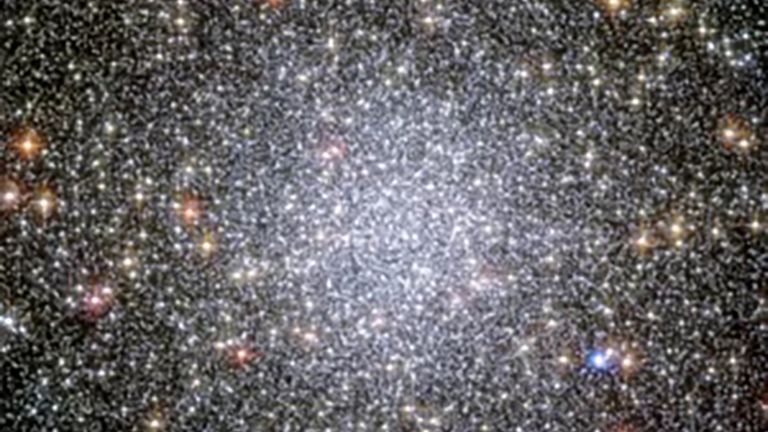Astronomers have created the most sensitive radio image ever of an ancient star cluster – and discovered a radio signal at the centre of it.
The image, which can be seen above, is of the second brightest globular cluster in the night sky, known as 47 Tucanae.
Star clusters are an ancient relic of the early universe and “very old, giant balls of stars that we see around the Milky Way”, astronomer Dr Arash Bahramian explained.
Dr Bahramian, from the International Centre for Radio Astronomy Research (ICRAR) in Australia, said: “They’re incredibly dense, with tens of thousands to millions of stars packed together in a sphere.
“Our image is of 47 Tucanae, one of the most massive globular clusters in the galaxy. It has over a million stars and a very bright, very dense core.”
It took more than 450 hours of observations on the Australia Telescope Compact Array to create the image, which is the deepest and most sensitive radio image ever compiled by an Australian radio telescope.
Radio waves from celestial objects – such as planets and stars – travel through space as light does, and radio telescopes can intercept them.
Astronomers can then convert these signals into radio images.
The 47 Tucanae cluster was first catalogued in the 1700s and can be seen with the naked eye.
Two possible causes for mysterious radio signal
Seeing it in detail has allowed astronomers to discover the previously undetected faint signal coming from its centre.
There are two possible reasons for the signal, lead author Dr Alessandro Paduano has said.
The first is that the cluster contains a black hole, which would be “be a highly significant discovery” and the second is that there is a pulsar – a rotating neutron star that emits radio waves.
“A pulsar this close to a cluster centre is also a scientifically interesting discovery, as it could be used to search for a central black hole that is yet to be detected,” Dr Paduano said.
